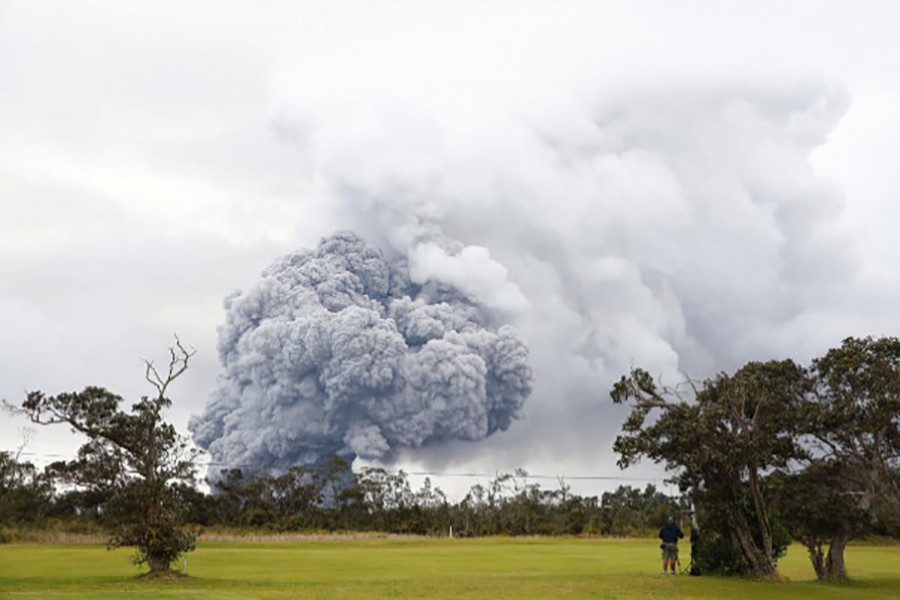Explosions intensified on Hawaii’s Kilauea volcano on Tuesday, spewing ash and triggering a red alert for aircraft for the first time since the latest eruption began 12 days ago.
Ash and volcanic smog, or vog, as it is called, rose to 12,000 feet (3,657 metres) above Kilauea’s crater and floated southwest, showering cars on Highway 11 with grey dust and prompting an “unhealthy air” advisory in the community of Pahala, 18 miles (29 km) from the summit, reports Reuters.
An aviation red alert means a volcanic eruption is under way that could spew ash along aircraft routes, the US Geological Survey (USGS) says on its website.
Ash was also a new hazard for residents of Hawaii’s Big Island, already grappling with volcanic gas and lava that has destroyed 37 homes and other structures and forced the evacuation of about 2,000 residents.
A shift in winds was expected to bring ash and vog inland on Wednesday and make them more concentrated, said John Bravender of the National Oceanic and Atmospheric Administration (NOAA).
“We’re observing more or less continuous emission of ash now with intermittent, more energetic ash bursts or plumes,” Steve Brantley, a deputy scientist in charge at the Hawaiian Volcano Observatory (HVO), said on a conference call with reporters.
The observatory warned the eruption could become more violent.
“At any time, activity may become more explosive, increasing the intensity of ash production and producing ballistic projectiles near the vent,” the HVO said in a statement on the change in aviation alert level to red from orange.
Ash is not poisonous but irritates the nose, eyes and airways. It can make roads slippery and large emissions could cause the failure of electrical power lines, said USGS chemist David Damby.


